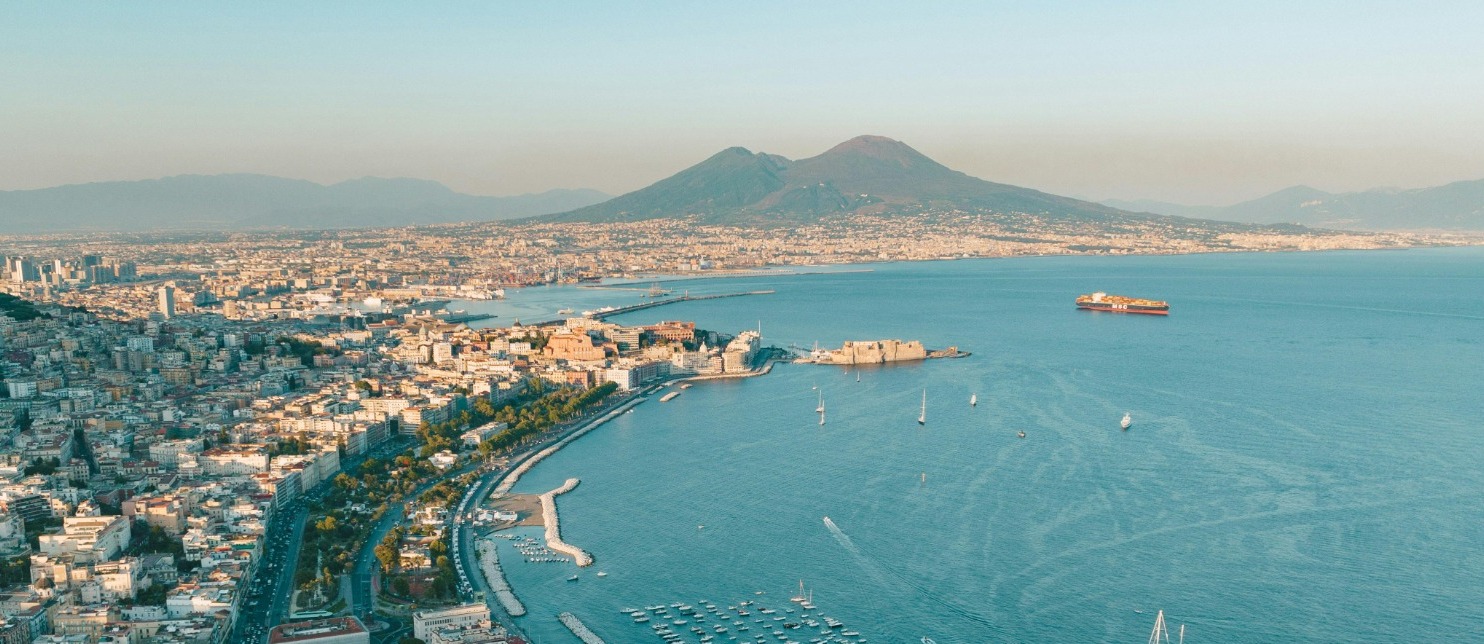Eruption of Vesuvius in 1631 and the blood of San Gennaro
The 1631 eruption of Vesuvius was among the most devastating in Europe since antiquity. Though long overshadowed by the cataclysmic eruption of 79 AD, which gave rise to the enduring Pompeii mania, the 1631 disaster is steeped in grim religious legends that still echo in the collective memory of Naples.
By Kathelijne Bonne. Please support GondwanaTalks with a one-time or recurring donation.
The eruption of 1631 was at least as large as that of 79 AD, but is completely overshadowed by the latter. Rome was at the apogee of its power during the 79 AD eruption, and the Gulf of Naples boasted some fascinating pleasure resorts like the one at Baiae. But in the year 1631 Naples was an impoverished backyard of the Spanish Empire ruled by Philip IV.
In both 79 AD and 1631, Vesuvius erupted catastrophically with a volcanic explosivity index (VEI) of 5, pulverizing one to ten cubic kilometers of molten rock. Descriptions of both eruptions showed recurring patterns in their course, such as the early signs of unrest, the large ash column at the peak of the cataclysm, and finally the pyroclastic flows causing damage and death.
These eruptions were not very different from that of Mount Saint Helens, also a VEI 5, which erupted in 1980. In 2022 Tonga erupted with similar or greater explosiveness and was hoped to cool the climate. Yet these recent eruptions all pale in comparison to the giant next to Vesuvius, the Campi Flegrei volcano, which is centered on the town of Pozzuoli, a place both beautiful and violent, not only through volcanoes.
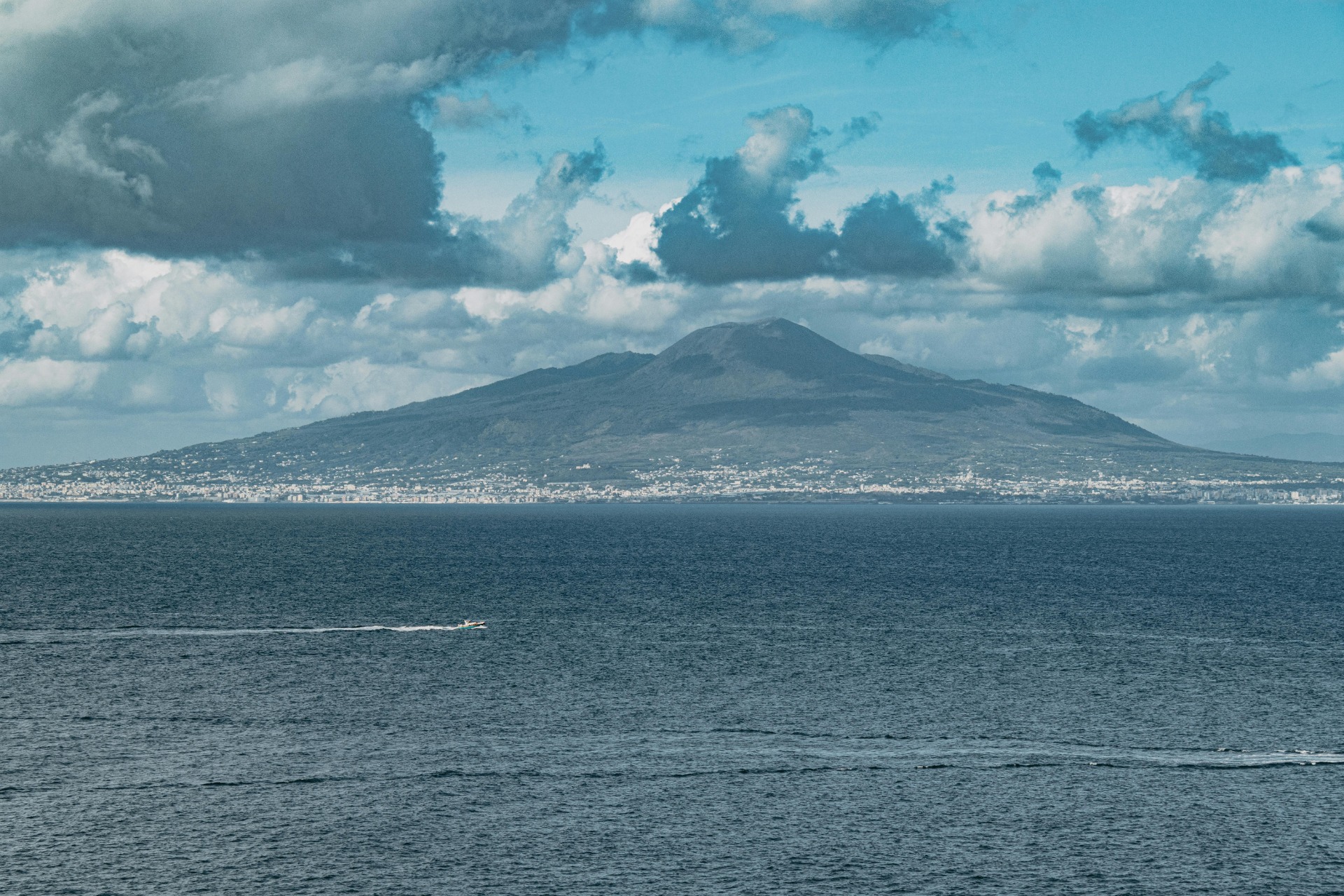
Gennaro is killed in Pozzuoli
The aftermath of Vesuvius in 79 AD had long faded when Gennaro, Bishop of Benevento, died in the year 305 in Pozzuoli. The probably still quite young man was beheaded during the persecution of Christians under Emperor Diocletian. His blood was collected in a vial that is kept in the Duomo of Naples. Due to his martyrdom, he was canonised as San Gennaro and has been patron saint of Naples since.
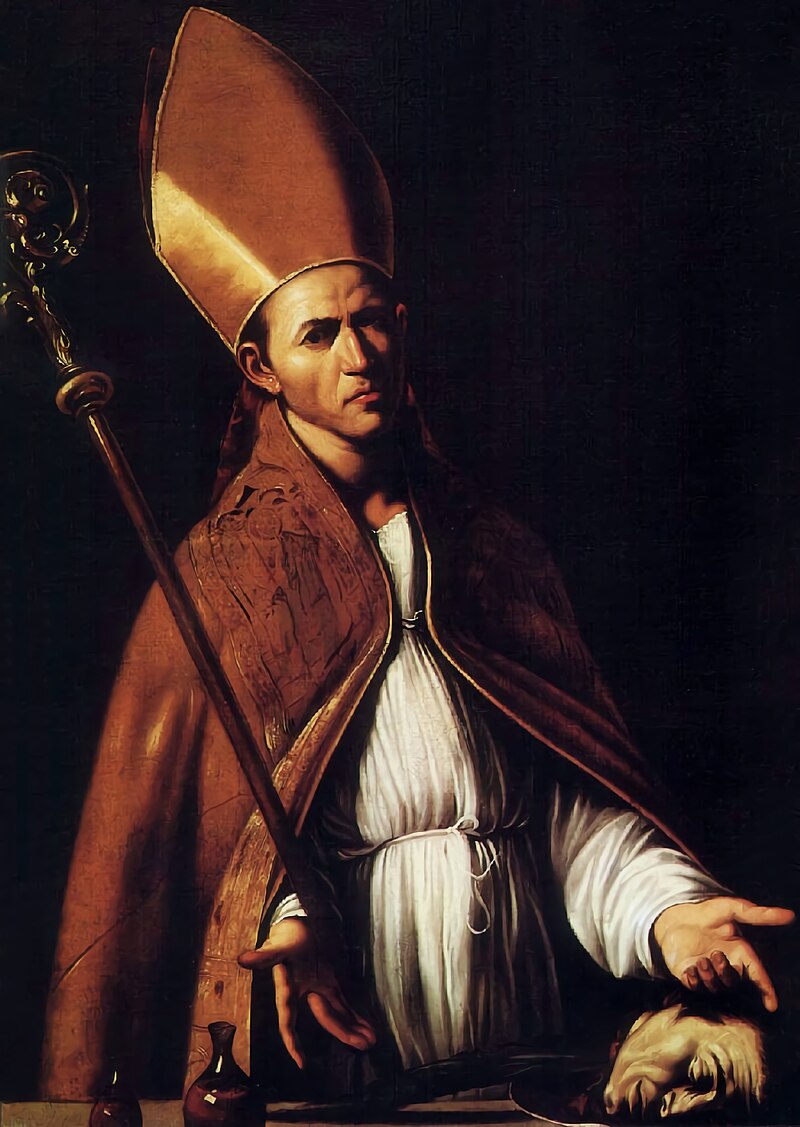
Signs of unrest in late 1631
In the 17th century, the people of Naples were plagued by poverty, rats and illness, and if that were not enough, Vesuvius began to stir from August 1631 onwards. Light tremors and vibrations were felt, and existing fumaroles began to smoke more intensely. A red glow was observed at the crater, a sign that it held an active lava lake. This scene must have resembled the ominous Nyiragongo volcano in Congo in the East African Rift Valley today, which envelops the clouds in a red ghostly glow every night.
In the weeks leading up to the eruption, starting in December 1631, earthquakes followed each other in rapid succession and the earth's surface rose due to rising magma in the subsoil. A similar phenomenon is known in the Campi Flegrei as bradyseism – which continues to cause unrest to this day: a largely felt earthquake with a magnitude of 4.6 has struck Bacoli near Naples (30 June 2025) and others have followed since in and near Pozzuoli.
In late 1631, the land surface around Vesuvius started to bulge. Earthquakes were felt further away and also in Naples. The unease grew on 15 December 1631 when a more powerful quake struck. Large cracks appeared around the Gran Cono (the actual crater of Vesuvius).
Vesuvius erupts on 16 December 1631
December 16th started with a massive explosion. An eruption column climbed skyward, reaching a height of about 17 miles (28 km) during the peak phase. Blocks, lapilli (small airborne stones) and ash rained down, covering the landscape under a blackish, lifeless blanket. Due to the wind, the largest load fell in the north and north-east of the volcano.
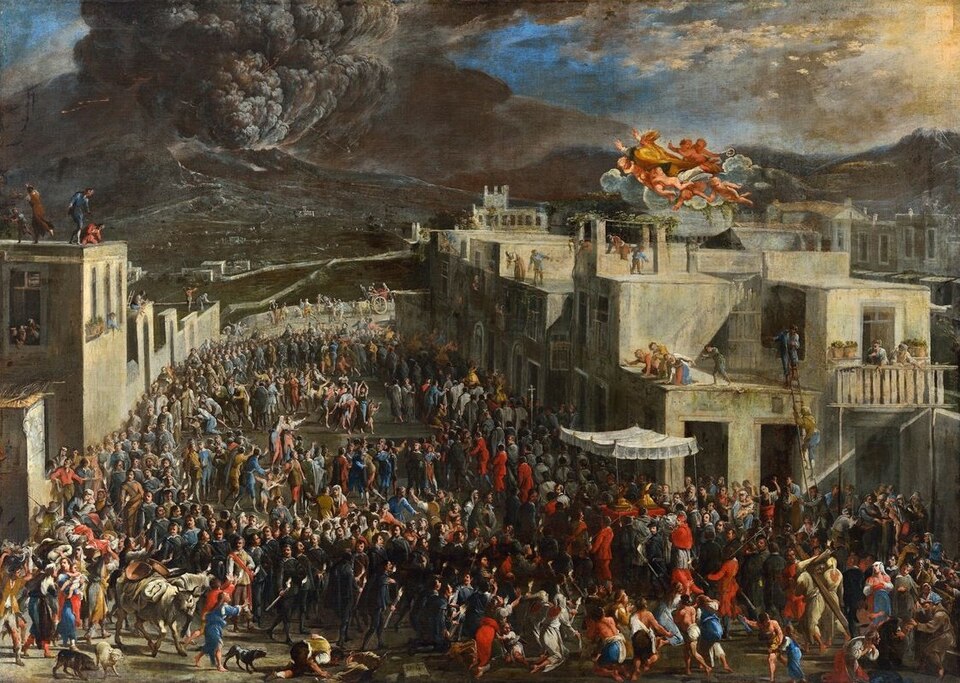
From "columna sostenuta" to pyroclastic flows
Such an eruption column – that looks like a tree trunk, Pliny compared it to a pine tree in 79 AD – can remain in place for hours, sometimes days due to forces that sustain it: heat, convection and eruptive power – weather may play a role too. This phase is called the "sustained column", or in Italian sounding like on a music score: columna sostenuta. The sustained column lasted eight hours in 1631.
On the dawn of 17 December, an earthquake struck again. The eruption column started to collapse under its own weight as the forces sustaining it were faltering. The glowing mixture of gas, ash and debris rapidly ran down the slopes. This is the phase of pyroclastic flows and base surges, the most destructive part of an eruption. It is likely that almost all of the fatalities occurred during this phase. Vegetation, farmland, livestock, villages and towns were buried below the incandescent mass of ash and debris. The pyroclastic flows reached villages such as Boscoreale, Torre del Greco and San Sebastiano al Vesuvio. Destruction was total.
Explosions, mudflows, tsunami
The hissing clash between hot magma and water in the ground or sea, caused strong "phreatomagmatic" explosions on 17 and 18 December. At the same time, the large amount of water vapor, humidity and ash particles led to heavy rainfall, resulting in mudflows (lahars) that caused damage up to 6 miles (10 km) away from the volcano, especially in northern and north-eastern areas. A tidal wave or tsunami destroyed parts of the coastline.
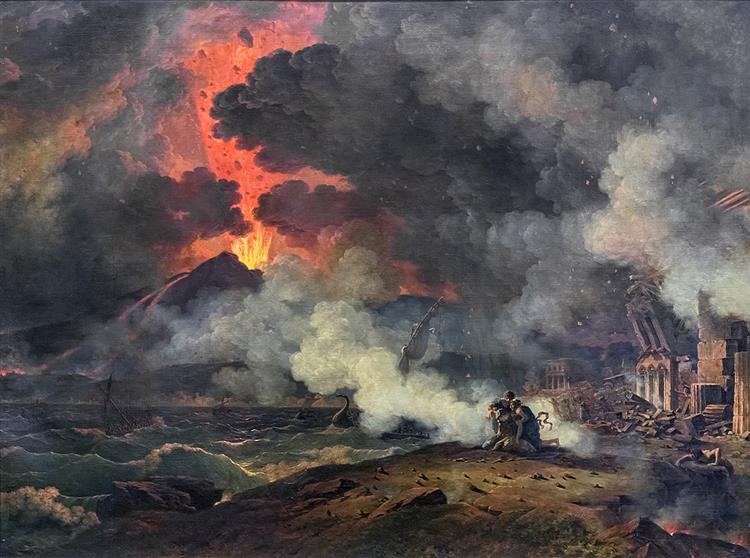
Aftermath: unrest, refugees, destroyed crops
Places such as Portici, Resina (built on the ancient Herculaneum), Torre del Greco and Torre Annunziata were partially destroyed. The town of Pietra Bianca (Greek: Leucopetra) was renamed Pietrarsa ("burnt stone") because the coastline had changed beyond recognition. The lovely white beach became a shore with only rubble and black pebbles.
A total of around 4,000 people lost their lives, although some estimates put the death toll at over 10,000. Thousands more were injured or left homeless. Some 44,000 people are said to have fled to Naples, leading to overpopulation and social unrest in the already impoverished city.
Farming in the region was severely affected by the mud and ash rains, which destroyed crops and temporarily rendered the soil infertile, further exacerbating the unrest.
And Vesuvius had mutilated itself. The summit was blown off and the volcano lost 450 metres in height.
God's wrath, processions and relics
The eruption was seen as divine punishment for heresy. The Viceroy of Naples mobilised the army to provide assistance and shelter for the displaced. In addition, large-scale activities were organised to beg the Almighty for mercy. On 18 December, the Archbishop of Naples organised processions with the ancient relics of San Gennaro, including the vial containing his coagulated blood.
San Gennaro is said to have silenced the volcano. According to lore, the eruption stopped when the procession reached the city gates. In memory of this event, a marble statue of San Gennaro was erected on the Maddalena Bridge in 1777, with his hand stretched out towards Vesuvius to protect the city from volcanic fury. To this day, San Gennaro is a beloved patron saint who is worshipped and depicted everywhere, with a protective outstretched arm.
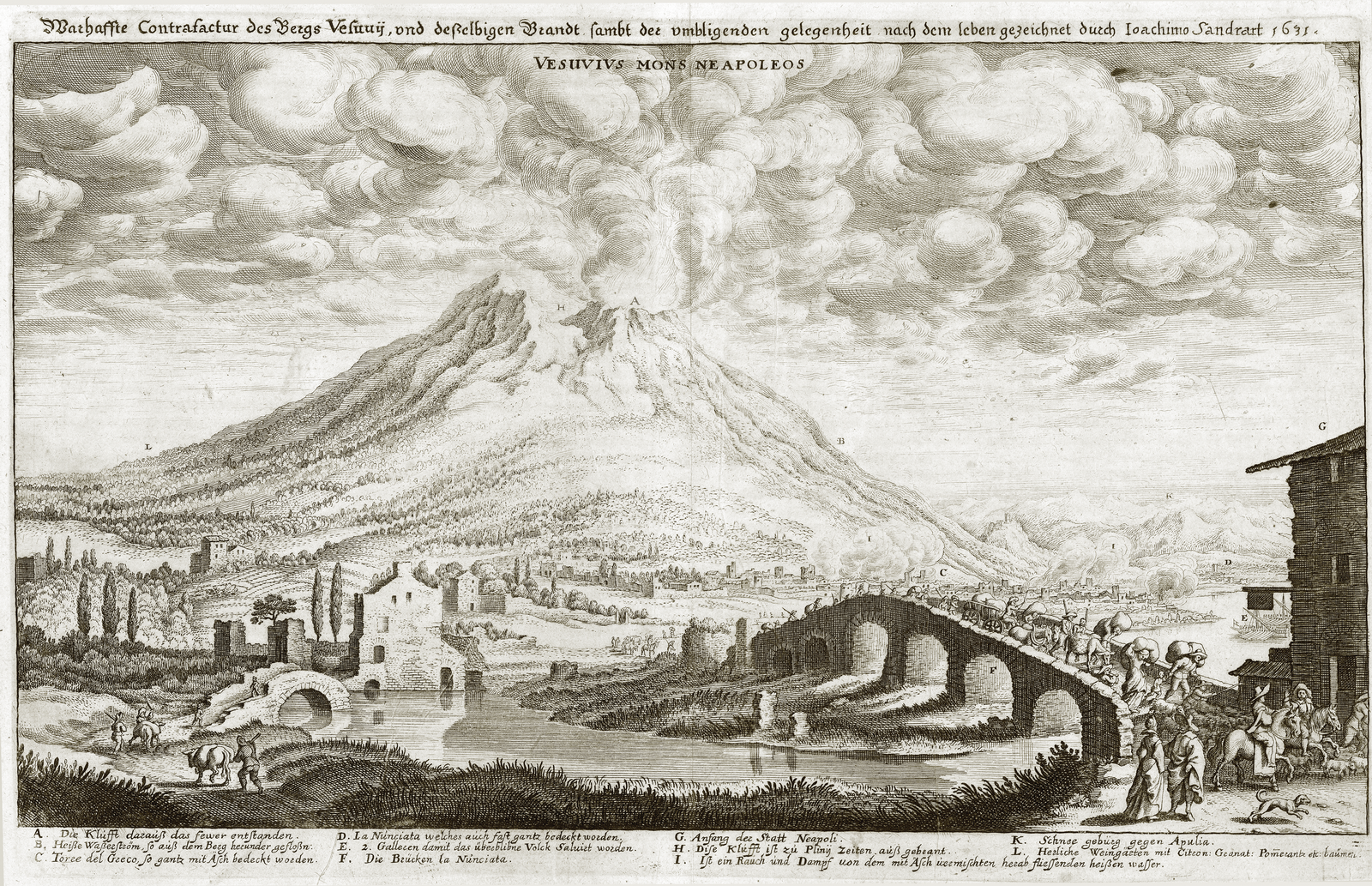
Miracle of the blood of San Gennaro
The eruption of 1631 "opened" the way to a new series of smaller and less damaging eruptions, which attracted wealthy Europeans, revelling in sensation and bloody legends. During their Grand Tour, they loved to catch a glimpse of an active volcano.
The blood of San Gennaro continuous to be kept in the Duomo of Naples, more specifically in the Cappella del Tesoro di San Gennaro. It is taken out several times a year, especially on September 19th. When it is found liquified the miracle of the blood takes place, a good omen. But if it remains solid, disaster will strike.
No one knows what Vesuvius has in store for the future. But I think we are still going to need San Gennaro.
-----
Naples remains an inexhaustible well of legends and stories. I used the metaphor of hellhound Cerberus, with the mafia, lava and waste each symbolising one of the three heads. Read more about the plastic eruption in Naples, and also about the Campi Flegrei volcano. Is the latter a supervolcano or not? And what is the impact of a super eruption? Which volcanoes belong to the illustrious club of supervolcanoes? Reread the article on Mount Saint Helens, Tonga, the dangers of La Palma, Cumbre Vieja, and the volcanoes in the African Rift Valley. You can find more about Italy and plate tectonics in the article on Puglia, the heel of the boot.

Kathelijne: I am intrigued by how earth, life, air, ocean and societies interact on geological and human timescales.
An immense effort is poured into GondwanaTalks.
Are my articles somehow meaningful to you? Support my work so I can keep GondwanaTalks afloat. Your contribution makes an ultra-Plinian difference. Make a one-off or recurring donation and become a:
Stromboli Strategist
(€2/month)
Tambora Trailblazer
(€4/month)
Vesuvian Visionary
(€7/month)
Already donating? Thank you so much!
-----
Recent posts:
South Africa rises due to extreme drought
Tribute to Richard Fortey and his trilobites
Do you like this article? Subscribe to the short newsletter every couple of weeks, free of heavy files and irritating gifs.
Sources
Rolandi, G., Barrella, A.M., & Borrelli, A. (1993). The 1631 eruption of Vesuvius. Journal of Volcanology and Geothermal Research, 58, 183-201.
Giacomelli, L., & Scandone, R. (2007). Vulcani d'Italia. Napoli, Liguori Editore. 320 p.
Guest, J.E., Cole, P.D., Duncan, A., & Chester, D.K. (2003). Volcanoes of Southern Italy. London (Geological Society). ISBN 1 86239 1386, 304 pp.
Lucio Lirer, Chirosca MC, Munno R, Petrosino P, Grimaldi M, Il Vesuvio, ieri, oggi, domani.
eruption vesuvius, vesuvius 1631, vesuvius eruptions, san gennaro, blood san gennaro, san gennaro naples, san gennaro blood wonder, san gennaro vesuvius

